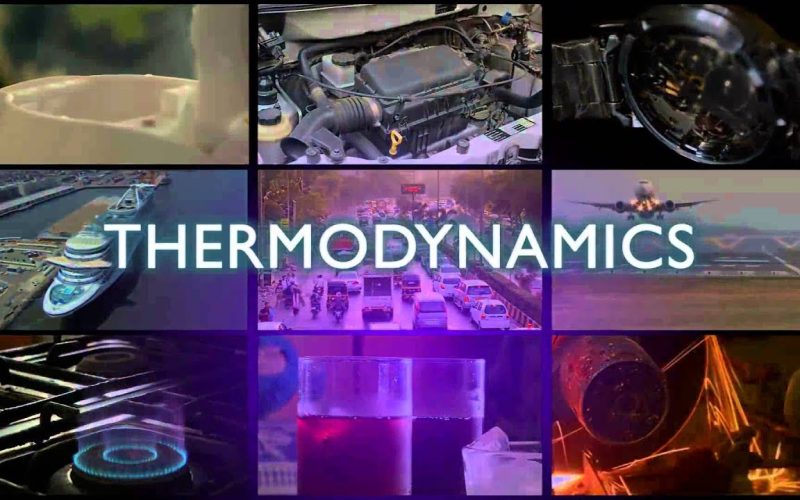Introduction
Thermodynamics is the science of heat, energy, and work. It explains how heat moves, how engines run, and even how stars burn. From steam engines in the 18th century to today’s powerful power plants, thermodynamics shapes our world. Its simple rules—called the laws of thermodynamics—apply to everything from cooking food to running computers. In this article, we will explore how thermodynamics began, the key theories that guide it, and the many ways we use it in modern life. Get ready to uncover the secrets of energy and see why thermodynamics matters every day.
A Brief History of Thermodynamics
1. Early Beginnings and Steam Power
The roots of thermodynamics trace back to the Industrial Revolution. In the late 1700s, inventors like James Watt improved the steam engine. They noticed that steam could push pistons and create motion. This sparked questions: Why does work come from heat? How efficient can engines become?
2. First Law Emerges
In the 1840s, scientists such as Rudolf Clausius and James Joule studied these questions. Joule’s experiments measured how mechanical work could heat water. Clausius introduced the idea that energy is conserved. Together, they shaped the First Law of Thermodynamics: energy cannot be created or destroyed, only changed in form.
3. Birth of Disorder: Entropy
Clausius also noticed that heat naturally flows from hot to cold, never the other way around without extra effort. He defined “entropy” to measure disorder or randomness. This led to the Second Law of Thermodynamics: total entropy of an isolated system always increases.
4. Third Law and Beyond
By the early 20th century, scientist Walther Nernst formulated the Third Law of Thermodynamics, stating that as temperature nears absolute zero, entropy approaches a constant minimum. Over time, these three laws became the foundation for understanding all energy changes in nature.
Core Theories of Thermodynamics
1. First Law: Conservation of Energy
The First Law says energy in a closed system stays constant. If you add heat, the system can use that energy for work or raise its temperature. Mathematically:
CopyEdit
ΔU = Q – W
where ΔU is change in internal energy, Q is heat added, and W is work done by the system. This law applies to engines, refrigerators, and living cells.
2. Second Law: Direction of Processes
The Second Law explains why some processes are one-way. Heat flows from high to low temperature. You cannot build a perfect engine that turns all heat into work—some energy is always “lost” as waste heat. The law introduces entropy (S). In any natural process, total entropy rises:
CopyEdit
ΔS ≥ 0
This guides engineers to design more efficient machines.
3. Third Law: Absolute Zero
The Third Law states that as temperature approaches absolute zero (–273.15 °C), the entropy of a perfect crystal approaches zero. It sets limits on how cold we can get and helps scientists study quantum effects at near-zero temperatures.
4. Zeroth Law: Thermal Equilibrium
Later, the Zeroth Law was defined: if two systems are each in thermal equilibrium with a third, then they are in equilibrium with each other. This simple idea underpins how we measure temperature with thermometers.
Modern Applications of Thermodynamics
1. Power Generation and Engines
Thermodynamics drives power plants worldwide. In a coal or gas plant, heat boils water to create steam. The steam spins turbines, turning generators to produce electricity. Modern combined-cycle plants use waste heat to run a second turbine, boosting efficiency above 60%.
Car engines also rely on thermodynamics. The Otto cycle in gasoline engines and the Diesel cycle in heavy trucks follow thermodynamic steps of compression, ignition, expansion, and exhaust. Engineers optimize pressures and temperatures to balance power, fuel use, and emissions.
2. Refrigeration and Air Conditioning
Refrigerators and air conditioners use a reverse thermodynamic cycle. A refrigerant absorbs heat inside a fridge, then releases it outside. By compressing and expanding the refrigerant, these appliances move heat against its natural flow—from cold to warm areas—keeping our food fresh and homes cool.
3. Renewable Energy Systems
Solar thermal power plants use mirrors to focus sunlight and heat a fluid, producing steam for turbines. Geothermal plants tap heat from Earth’s core to drive generators. Even emerging technologies like concentrated solar power storage rely on thermodynamic principles to store and release energy as needed.
4. Electronics and Computing
Computers generate heat as they work. Thermodynamics informs cooling designs—fans, heat sinks, and liquid cooling systems—to keep processors at safe temperatures. As chips become smaller and faster, managing heat effectively becomes vital to prevent damage and maintain performance.
5. Chemical and Biological Processes
Chemical engineers use thermodynamics to design processes like producing ammonia for fertilizer. By knowing which reactions release or absorb heat, they control reactors safely and efficiently. In biology, thermodynamics helps explain how cells convert food into energy (ATP), fueling life’s activities.
The Future of Thermodynamics
1. Nano- and Quantum-Scale Systems
At very small scales, classical thermodynamics meets quantum mechanics. Researchers explore “quantum heat engines” that could one day power tiny devices. Understanding thermodynamics at the nano-level may lead to ultra-efficient sensors and computers.
2. Climate and Environmental Science
Thermodynamics also underpins climate models. It helps scientists predict how heat from the sun interacts with Earth’s atmosphere, oceans, and ice. By improving these models, we can better understand climate change and design steps to reduce its impact.
3. Advanced Materials and Energy Storage
New materials like phase-change alloys store heat at specific temperatures. These materials could smooth out renewable energy supply by storing excess solar or wind energy and releasing it on demand. Thermodynamics guides the discovery and testing of these advanced materials.
Tips for Learning Thermodynamics
- Master the Laws First: Understand the four laws before diving into equations.
- Work Simple Problems: Practice with heat flow and engine cycle examples.
- Use Diagrams: Sketching PV diagrams (pressure vs. volume) helps visualize cycles.
- Relate to Real Life: Think about your car engine, refrigerator, or weather when studying concepts.
- Leverage Simulations: Interactive software can show you thermodynamic processes in action.
With these steps, thermodynamics becomes less abstract and more connected to everyday life.
Conclusion
Thermodynamics began with steam engines and grew into a universal science of energy and heat. Its four laws—from energy conservation to absolute zero—explain why heat flows, why engines work, and why some processes are one-way. Today, thermodynamics powers our electricity plants, cools our homes, and drives advances in renewable energy and quantum devices. By learning its core principles and exploring modern applications, we see how thermodynamics shapes our world and guides future innovations. Dive into this fascinating field, and you’ll discover the rules that govern everything from boiling water to the stars above.










